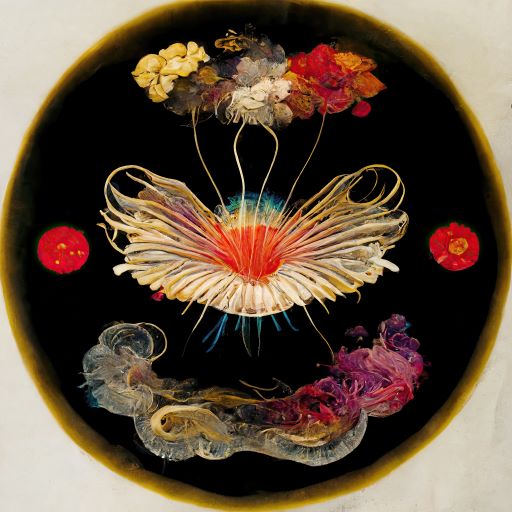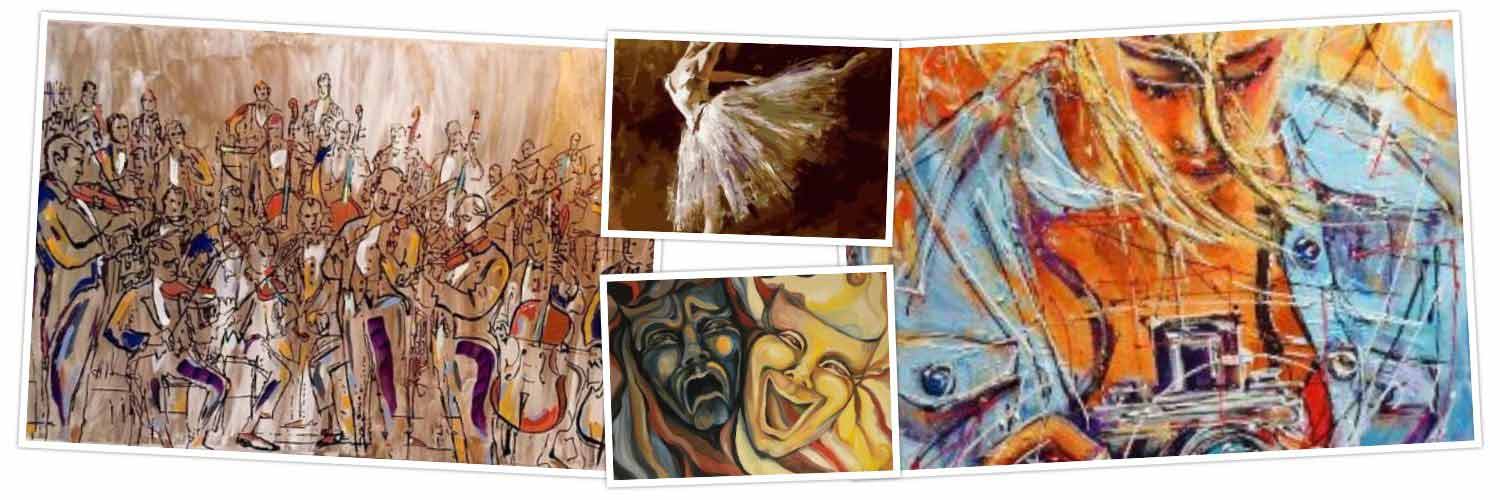How AI Will Impact Art
By BERIT MASON, Contributor
“AI” stands for artificial intelligence.
As our world is digitized and computerized, AI software is being applied to medicine, education, shipping and art. Yes, art.
The leading AI software on the market are Midjourney, DALL-E and DALL-E 2. With them, artists can photograph their work, scan it into the computer and then it gets to work: improving and changing the original. The artists can also tell the computer what they want and the computer produces the image.
For example, the artist can type in – or “text-promt”- “cat,” “fireplace,” “cocoa,” and “young girl in red dress,” and the computer furnishes young girls in red pinafores drinking cocoa with a cat in front of a fire. Then the artist/creator chooses one and tweaks and enhances it until the desired effect/composition is achieved. The attraction of these programs is that the software creates an almost unlimited number of images from which to work.
Mark McCoin is Associate Professor, New Media Area Co-Coordinator at the UTSA School of Art who teaches “new media,” including digital art, web art, and “everything that you can imagine in the last fifty years.”
“My specialties are inter-disciplinary performance and installation with technologies, and that would include theater technologies with projection and video, lighting, sound, but done more in the service of performance art,” he explained.

McCoin is already working to apply AI to his own work. He says this new technology allows creators the kind of self-expression that would otherwise be impossible. “An example are immersive experiences, that surround the viewer with sound and video in a space,” he said.
The Immersive Van Gogh Exhibit recently enthralled crowds in San Antonio and other cities by making visitors feel like they have literally stepped into the great artist’s famous paintings, like standing inside of his starry skies or his vivid, yellow sunflowers and bales of hay. The exhibit was 500,000 cubic feet of projections and 60,600 frames of video.
AI is an equal opportunity teacher and it allows Anyone to create. People who’ve never even picked up a paintbrush are creating with the new “digital” medium memes, videos, “non-fungible tokens” or NFTs and “infinite zooming loops,” which are videos that zoom in and in and in, on a paintings’ seemingly infinite details.
“We separate ourselves from entertainment and design, which are also creative forms,” says McCoin of those working with AI, “but we are using AI art to express our culture, who we are and what is going on in our world.”
His students, artists of the future, learn to blend their physical art with AI software, projecting video onto a ceramic piece, for instance, or making a sculpture with speakers to create performance art. “We are expanding traditional media into something new. It is not better … it is just ‘and.’ It is what is possible. But I am very curious to see where it goes and what it does to the culture because this is kind of a bombshell,” says McCoin. “One artist I know is using samples of his own drawings to input into the AI—to infuse some of his natural talent and natural tendencies into the art that the AI will come up with—so it is not just putting in a ‘text prompt’ but inputting some of the techniques he has developed as an artist over time.”
Applying AI to medicine or engineering is different from applying it to art. In scientific fields, AI means speeding up calculations or quickly pinpointing a diagnosis. So, AI doesn’t steal the limelight from a doctor, engineer or scientist because all that they want are accurate results. But artists are proud of physically rendering with their hands what they see in life onto a canvas or lump of clay. They are proud of their years of hard work, study, and practice. So, some protest against AI.
But McCoin sees it as another tool for the tool box. And practically speaking, it saves time. These programs are almost necessary for the mass production of digital art and culture. Art wrought by hand takes weeks and months while AI can do it in a sitting.
“I was recently working on a proposal for a commission, a competition,” he says, “and I used the AI to create a storyboard for a proposed film. I could have done the same thing by hand because I have those skills but what took me three days would have taken me three months to do by hand.”
Still, it is controversial. Its validity was questioned when creator Jason Allen won for his AI picture, “Théâtre D’Opéra Spatial,” French for “Space Opera Theater,” at a Colorado state fair though it was reported that he did spend “80 hours going over 900 iterations,” which means the artist sat for long periods of time, working with AI to work the image to the desired perfection. He had never entered an art competition before and most likely would not have, without the help of AI. So, could AI ever supplant handmade art? Maybe not, but it most certainly could supplant jobs.
“What will happen to commercial design artists and illustrators? Will they become irrelevant? Is this something that in some years is going to take over?” asks McCoiny, rhetorically. No one knows the answer at present.
“What if you could give a prompt, (the typed instruction to the AI program,) or even a narrative story and say that you want these specific people in it, and it makes that for you? What does that do to filmmaking? To animation? We are at the beginning of this!”
*
How about AI art in art galleries? Can AI art just barge in and push aside human-crafted art, like it did in Colorado? Well, it already has.

David Stout is a University of North Texas professor, (MFA CalArts,) and an artist who lives in Denton. He directs the Hybrid Arts Laboratory, coordinating the Initiative for Advance Research in Technology and the Arts (iARTA).
“I am a multi-disciplinary artist so I have studied both the visual arts, music and the performing arts and I’ve been working with technology since the late ’70s,” he says. “The kind of technology required to implement AI are hordes of massive servers and teams of people training AIs. It is funded by tech companies and tech industry start-ups and a few research laboratories. The computers can make these images as those servers have been fed billions of images and from those images it serves up what it thinks creators want.
“I work in the combination of music, filmmaking and visual art … digital print-making,” he explains. “And so, I am looking at this in animation and films. I am also exhibiting it in new media shows and print shows. It is something that anyone can do but if you want to make good art with it, it is a lot like photography. You have to make hundreds of images and choose the three that really work.”
Stout’s work is exhibiting at the CURRENTS Gallery in Santa Fe, New Mexico, work he produced entirely with AI, featuring some nine prints and a video animation, part of his COSMOGRAMS series.
He likes the new style of creating and says its capabilities are vast.
“We are talking about having a machine that can simulate and pull from the entire history of human culture. It is very addicting and it is very fun,” he notes. “If you have the knowledge that an artist has, it is quite a different thing than the knowledge that a layperson has. So, I think that we will see that some of the work that comes out of a AI is really good, and some of it is not so good.”
He agrees that professional illustrators and designers have a right to worry about their jobs. “It is disconcerting to think that someone with very little training and who may not even do that good of a job using AI could put people out of work. So, there is no doubt that that is a concern—but I would add that that concern is hitting about every field.”
Including education, where AI is changing the ABCs of learning.
“I am a college professor and the question is when a student can sit down and generate their art, their music and their term papers all with AI, where does that leave us?”
——————————————————————————————————————
For more information about McCoin’s and Stout’s work, you can visit their respective websites: www.markmccoin.com and www.davidstout.net;

Fascinating article. It is very intriguing. When I moved from film photography to digital, there was a learning curve, I found the new world I could create was superior to what I could do in my darkroom. Quite a few photographers found themselves losing work, as did I because every person with the new digital format fancied themselves an instant ‘professional photographer’. Perhaps AI is just the newest thing to make artists think outside of the box and roll with the punches life throws. A friend once commented that my photographs produced with the assistance of my computer were not ‘pure’ and should be identified with a disclaimer of manipulation. My response was to point out the dodging and burning in a darkroom was also altering the negative’s content in his own work. Bring it on, AI. Sink or swim, I say!
You go girl! AI affects everything. it’s all I think about in my business now
– eileen